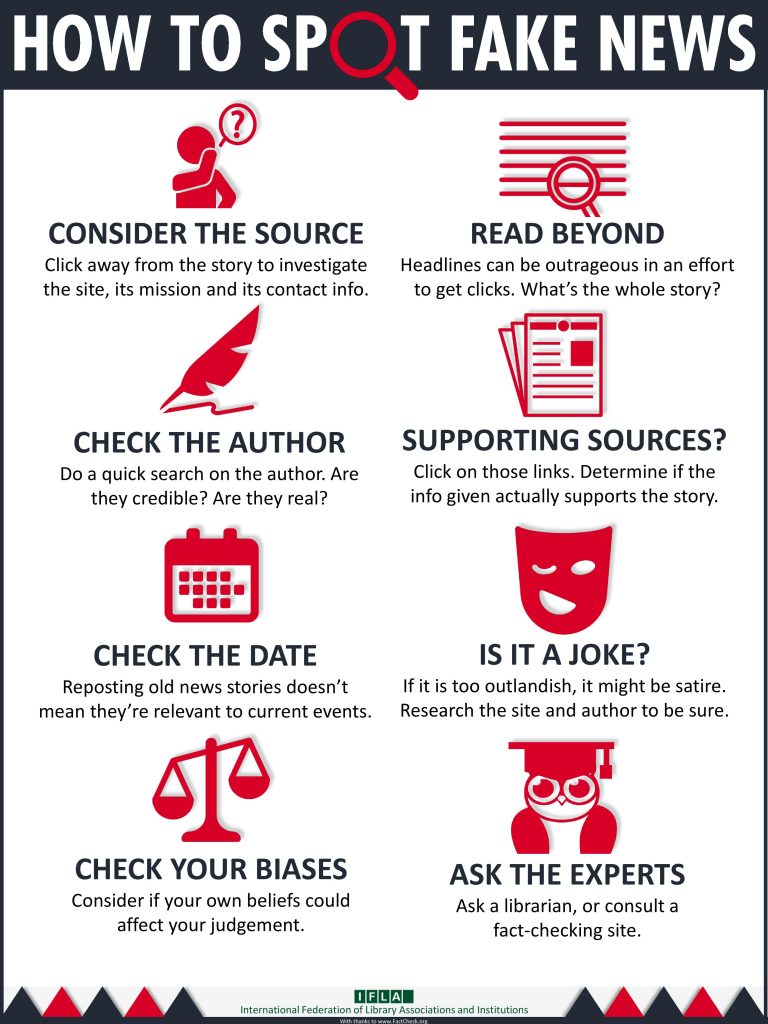Here are several strategies that can be used to identify fake news. Use the method that makes the most sense to you.

Caulfield, Mike. "SIFT (The Four Moves)" Hapgood, 19 June 2019, https://hapgood.us/2019/06/19/sift-the-four-moves/
Mike Caulfield's SIFT (The Four Moves) method:
Stop
Before reading an article or post, stop and check where it came from. Do you know the source or website? What kind of reputation does the source and website have?
Investigate the source
Know who wrote it. Is it from an authentic source? What is the expertise and intent of the source?
Find better coverage
Verify the claim the article or post is making. Look for a different source that is trusted and reputable.
Trace claims, quotes, and media to the original context
With today's technology, it's easy to alter an image, video, or text to present a viewpoint different from the original context. Trace it back to its source to gain a gauge on the accuracy of the information you were presented.

IFLA. "Alternative Facts and Fake News - Verifiability in the Information Society." Library Policy and Advocacy Blog, 27 Jan 2017, https://blogs.ifla.org/lpa/2017/01/27/alternative-facts-and-fake-news-verifiability-in-the-information-society/
IFLA's infographic based on Factcheck.org's How to Spot Fake News article:
Consider the source
Click away from the story to investigate the site, its mission and its contact info.
Read beyond
Headlines can be outrageous in an effort to get clicks. What is the whole story?
Check the author
Do a quick search on the author. Are they credible? Are they real?
Supporting sources?
Click on those links. Determine if the info given actually supports the story.
Check the date
Reposting old news stories doesn't mean they're relevant to current events.
Is it a joke?
If it is too outlandish, it might be satire. Research the site and author to be sure.
Check your biases
Consider if your own beliefs could affect your judgement.
Ask the experts
Ask a librarian, or consult a fact-checking site.
MediaSmart's 4 quick and easy steps to Break the Fake: How to tell what's true online (website includes videos):
SPOT Fake News Online is a media literacy tool from News Media Canada and part of their national campaign to teach Canadians to identify fake news.
Source - is this a credible source?
Perspective - is the perspective biased?
Other sources - are the other sources reporting the same story?
Time - is the story timely?
Articles on identifying and combating misinformation:
